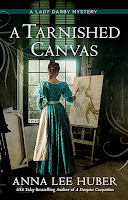I received this book for free from Netgalley. That did not influence this review.
Constance Silver and Solomon Grey are at it again in The Trick of the Treasure, Book 4 of Mary Lancaster’s new Victorian mystery series.
Constance is the owner of high-priced brothel and safe place for disadvantaged women. Solomon is a hugely successful self-made businessman. And they have fallen in love.
They are also the detectives running the Silver and Grey Agency. Their latest assignment is finding a treasure that has gone missing from the safe room of an adventurer, Barnabas Lloyd. Lloyd is addicted to treasure hunting, to the point that he has nearly bankrupted his family. This treasure, literally discovered on a deserted island with the help of an old map, is desperately needed to pay off creditors and keep the family afloat. The family consists of a grown son who accompanied Barnabas on this latest trip, a sixteen-year-old daughter who is discovering suitors, a twelve-year-old daughter who is wiser than her older siblings, and a wife who finds life more enjoyable when her husband is away than when he is home. There is also Barnabas’ spinster sister, who is ignored at home but finds her joy in charitable endeavors.The treasure was unloaded from the ship, inspected by customs officers, then carried to the Lloyds’ home, where it was locked in an interior room with no windows and only one door. The next morning, when Barnabas went to show the treasure to his youngest daughter, the treasure chest was empty.
Someone stole it. But who? And how?
Constance and Solomon dive into the mystery with their usual conscientious flair. Along the way, they begin to question whether the danger of investigative work is worth it. Although each is willing to risk their own life, it’s different watching a loved one do so.
This is another intriguing, well-plotted historical mystery. The romance between the two leads is progressing apace. I recommend this series highly – but strongly suggest you start with book 1.



















